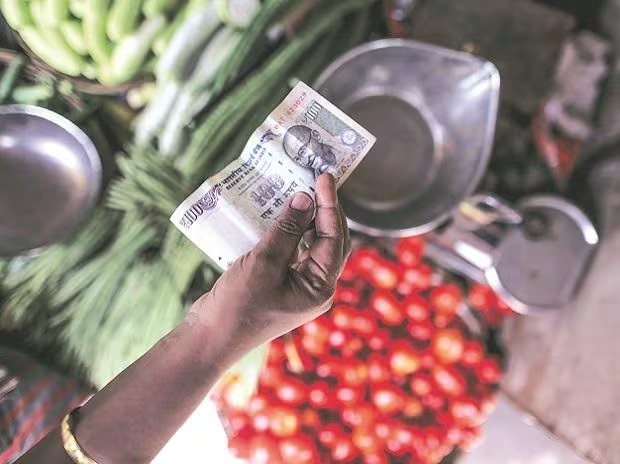Abstract
Rising prices are a concern for policymakers because they have the most significant impact on ordinary individuals. In developing economies, the adverse effects of inflation are more noticeable because essential necessities constitute a larger portion of people’s expenses compared to developed countries. This paper explains the timeline of food inflation in India, along with changes in its pattern. It further elaborates on the various reasons behind food inflation in India, including the impact of the Covid-19 pandemic, the Russia-Ukraine war, and the role of climatic conditions, rising income, and hoarding. This paper sheds light on recent trends in food inflation in India, comparing it with some developed economies. We also examine the role of the RBI and the Central Government in containing food inflation in India. It compares India’s food inflation policies with those of some emerging economies worldwide. Lastly, this paper provides potential solutions to improve various aspects and highlights initiatives aimed at solving the problem of food inflation.
Introduction
Food inflation has not only affected India, but has impacted the whole world, and is a matter of global concern. However, the risk of inflation has been felt more in the developing economies, with a higher share of necessities in the consumption basket, as compared to the developed economies. Unlike other economies, food inflation has a significant impact on the aggregate retail inflation in India. This simply means that the high portion of money spent on food by households and it’s impact on the Consumer Price Index (CPI) contributes to inflation expectations. When people see food prices increasing, they tend to expect inflation in other areas too. Hence, wages might be adjusted to keep up the overall inflation rate, and this adjustment indirectly takes into account the impact of rising food prices has on the cost of living. So, food prices can influence both inflation expectations and wage adjustments. This helps in determining India’s overall inflation dynamics and the use of various policies to solve it. With a Population of 142.86 crore (2023 mid-year estimates), and people spending a significant amount on food expenditure, food inflation becomes an important topic to study. It has been a major cause of concern for both common man and Policy makers. Ever since October 2008, high inflationary pressure, especially double digit food inflation, has been negatively impacting the robustly growing Indian economy. Food prices in India started increasing from mid-2008 onwards, and in the year 2010-11, the overall inflation rate surpassed 10% of the entire year.
With the recent hike in the prices of tomatoes, due to climatic conditions, it becomes necessary to study the phenomenon of food inflation, in order to provide measures to curb it. At the same time, it is also essential to draw a comparison between the food inflation policies brought up by various emerging economies, to find various ways to maintain food security. This paper analyzes the phenomenon of food inflation, it’s dimensions, and policies implemented in different emerging economies, to find potential solutions.
A Timeline of India’s food Inflation
High and persistent inflation has been posing major macroeconomic hurdles for the Indian economy for a long period of time. The food inflation was relatively stable during the pre- independence era, due to traditional agricultural practices and limited market influence. However, the 1960s saw two wars, with China (1962), and with Pakistan (1965), along with twin-droughts in 1965 and 1966, which created serious food shortages and increased food inflation. Nevertheless, the inflation cooled down by the end of the decade, due to bumper crop and green revolution initiatives. The 1970s stood out as a notably turbulent era marked by significant uncertainty related to inflation. By the late 1970s, the supply-demand imbalance led to extensively higher food inflation.
Figure 1: Consumer Inflation over years https://scripbox.com/blog/history-of-inflation-in-india-and-what-to-expect-going-forward/?amp
The ‘Green Revolution’ policies which included price incentives, technology subsidies and infrastructural investment (especially in irrigation), along with Buffer stocks (Buffer stock system is a plan by the government to stabilize prices in a volatile market), kept food inflation less severe in the 1980s and 1990s. These actions boosted cereal and crop productivity and ensured stability. Again in the 1990s and 2000s, the agricultural supply growth slowed to around 3 1/2 % per year, with cereal production growing by only 1 1/2 % per year. To manage the rising demand, reducing buffer stocks helped to control the food inflation, as MSP growth moderated (refer to figure 2 and figure 3).
The Indian Government’s response to the increase in global food prices in 2007-08 helped to restrict the impact on domestic food prices (refer to figure 4). However, the buffer stocks continued to drop even falling significantly below the accepted norms (refer to figure 2). In May 2007, the quantity of wheat stock in the central pool was nearly half of the prescribed buffer stock norms. Along with this, governmental measures like large increases in food and fertilizer subsidies, and an increase of 30% in minimum support prices in 2008-2009 not only delayed, but also extended inflationary pressure, even after the global food commodity prices had started to decrease. Additionally, the global commodity price rise of 2007 to 2008 also led to two of the biggest exporters of food like India and China, along with those who imported food, becoming cautious about spending too much on International grain markets (especially during food emergencies). This resulted in massive increasing grain procurement and hoarding.
From 2006 to 2014, India faced the major concerns of consistently high food inflation. During this period, food prices went up by an average of 9%, and at its highest point in late 2009, it even exceeded 20%. This sustained high food inflation is especially troubling, because food makes up to 45% of people spending(as per 2015 data).
The period of April 2014 to March 2019 was a successful period to control food inflation in India. During this time, the 6% limit of Consumer Price Index (CPI) inflation, set by the Reserve Bank of India (RBI), was breached only in 6 out of 60 months, and CPI inflation stayed below 4% in 23 out of 60 months. The year-on-year CPI averaged 4.49%, and even lower at 3.52% for Consumption Food Price Index (CFPI) inflation. This means that, while the general inflation was under control, food inflation was even milder. This trend was especially noticeable after September 2016. However, the food inflation has witnessed fluctuations from 2020 onwards. This is because of various factors such as supply chain disruptions due to the Covid-19 pandemic, the Russia-Ukraine war, changes in the global commodity prices, climatic conditions etc. In the initial period of 2022, the CPI inflation had exceeded RBI’s upper limit of 6%. From April 2019 to May 2022, the CPI inflation exceeded 4% target in 32 out of 38 months, and went 6% in 18 months. There was surge in food prices in February 2022, reaching 5.85%, the highest level since November 2020.
Click Here To Download The Paper


📌Analysis of Bills and Acts
📌 Summary of Reports from Government Agencies
📌 Analysis of Election Manifestos

